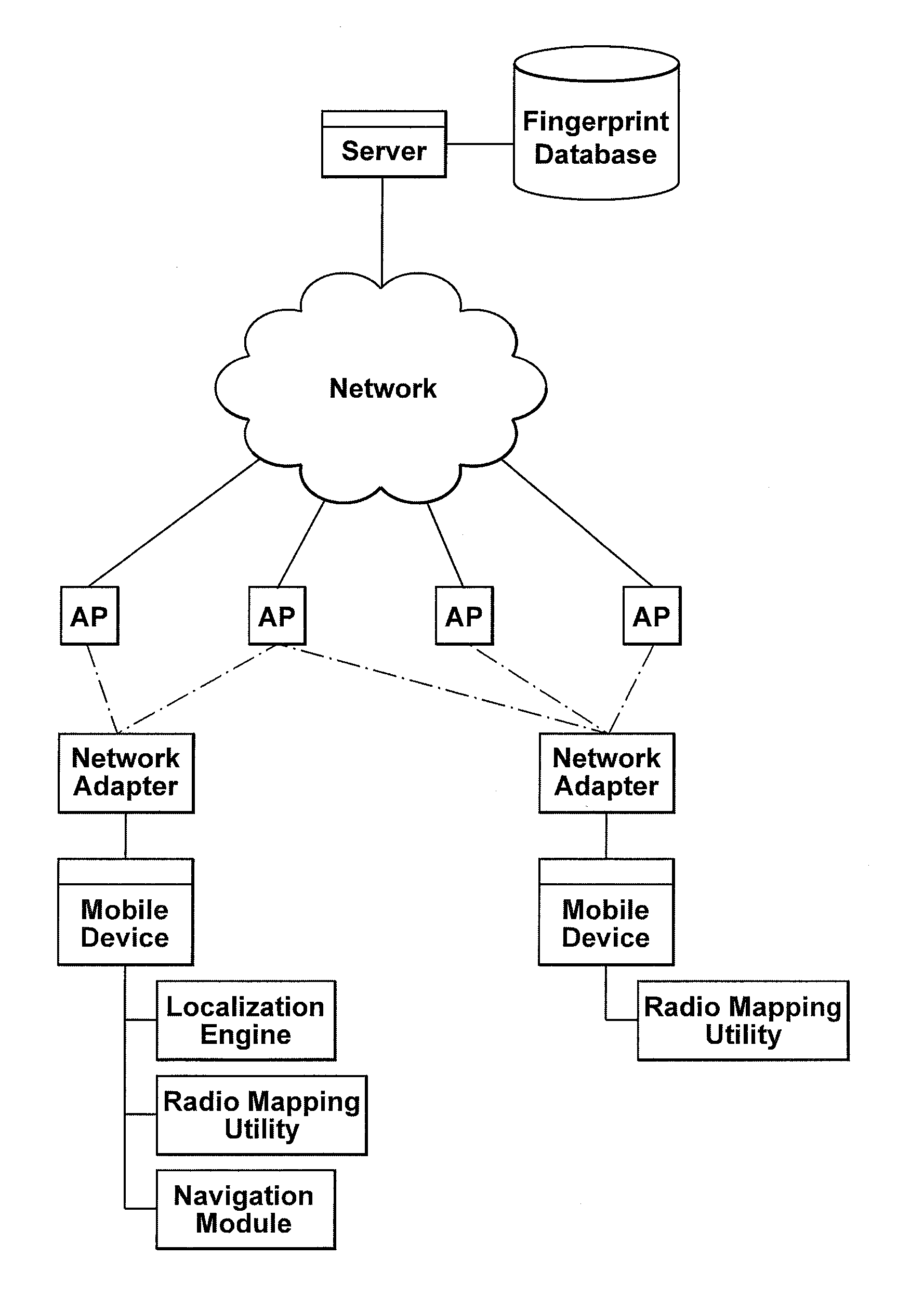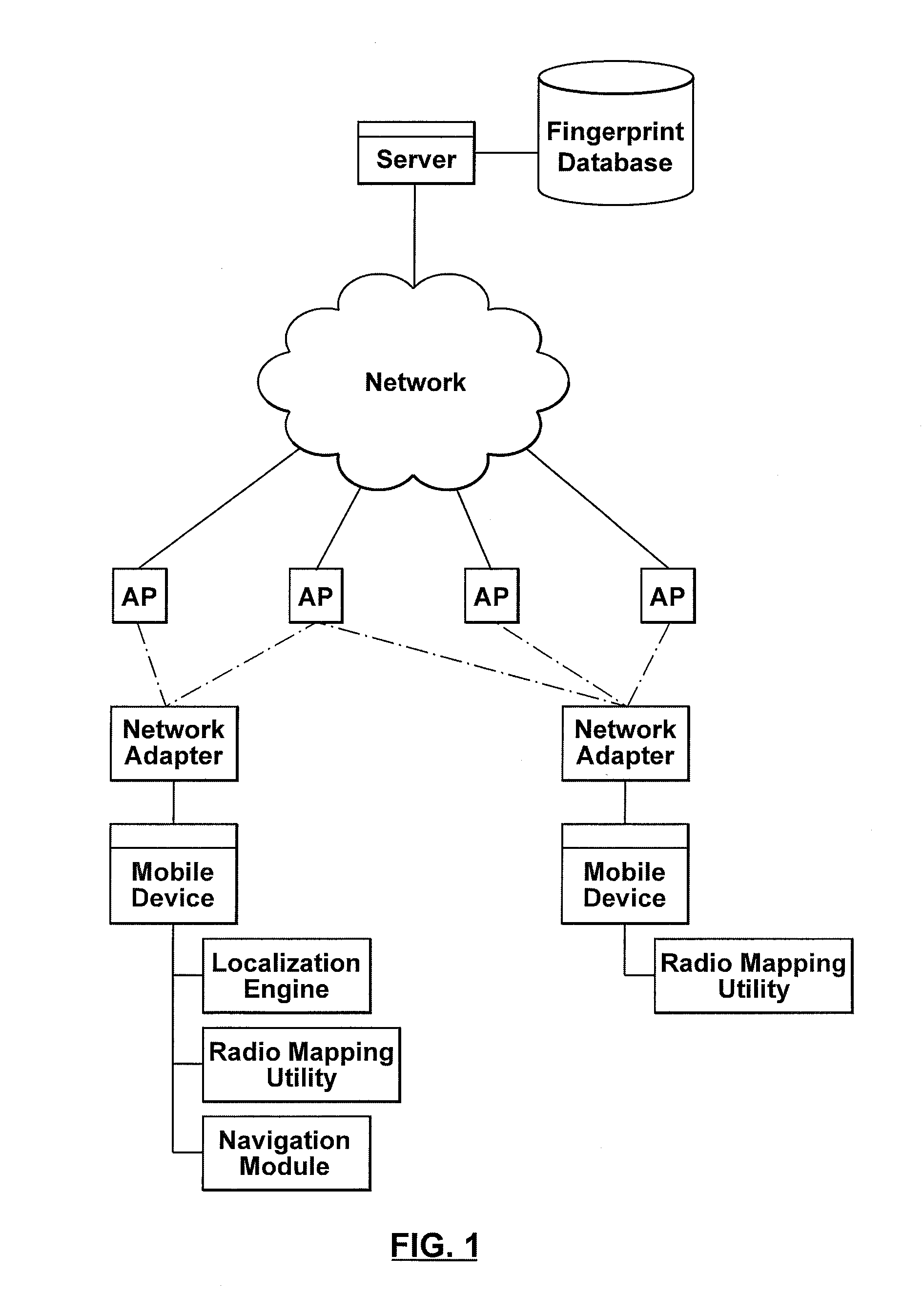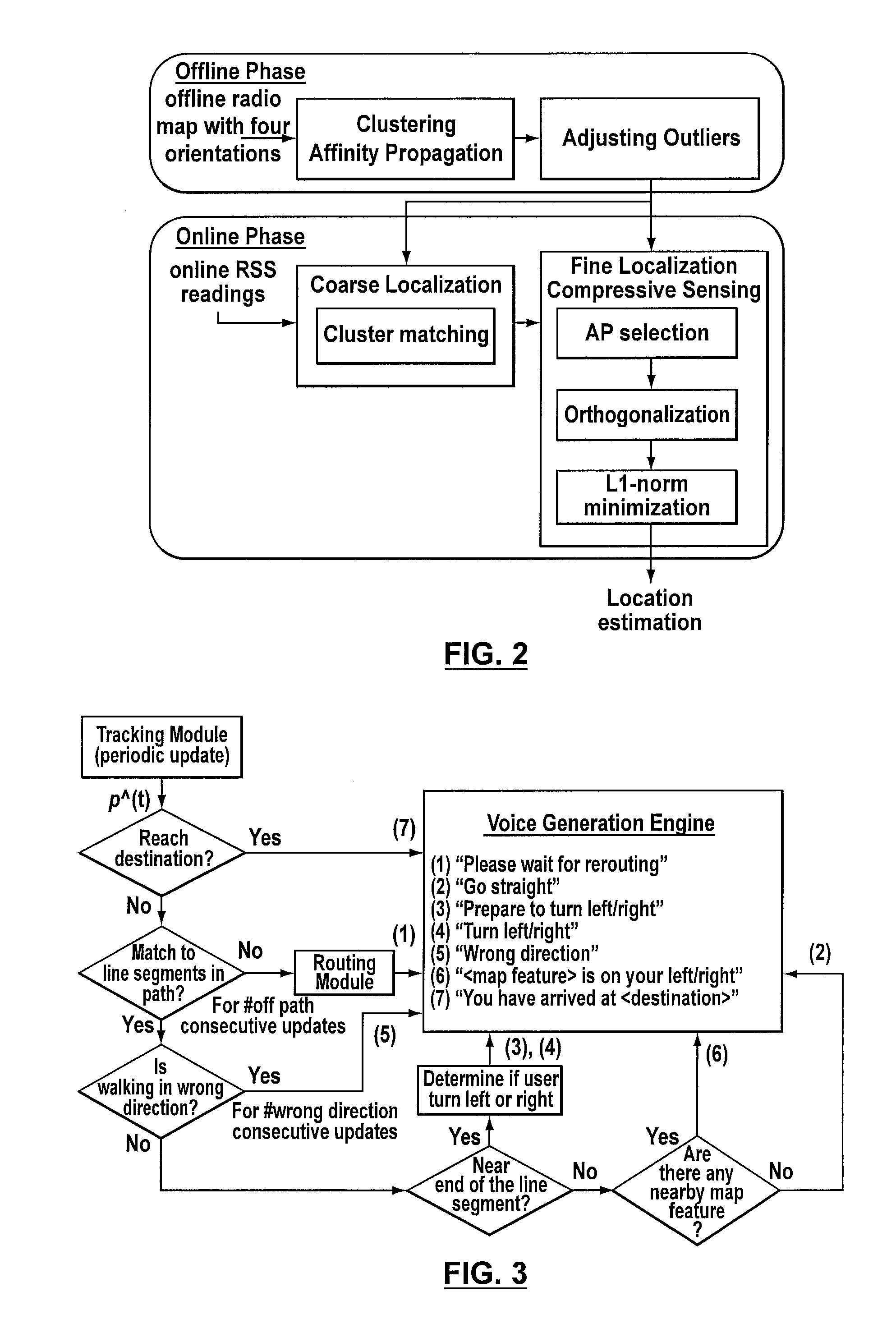System, method and computer program for anonymous localization
a technology of anonymous localization and computer program, which is applied in the direction of instruments, wireless communication, transmission, etc., can solve the problems of labor overhead of real-world infrastructure installation, inability to provide optimal foundation for indoor lbss, and difficulty in providing satisfactory level of accuracy in most applications. , to achieve the effect of easy to miss
- Summary
- Abstract
- Description
- Claims
- Application Information
AI Technical Summary
Benefits of technology
Problems solved by technology
Method used
Image
Examples
experiment # 1
Experiment #1
[0116]Real data were obtained from an office building. Specifically, the experiments were carried out on a 30 m×46 m area of the fourth floor of an eight-story building (Bahen Center at the University of Toronto). A total of 26 APs were detected throughout the area of interest. A PDA (HP iPAQ hx4700 with Windows Mobile 2003 pocket PC) was used to measure WLAN signal strength value, and a software was developed in Visual Studio C# to implement the CS-based positioning system on the device. The RSS values were collected on the device by using the open source library OpenNetCF, which provides access to MAC address and RSS values of WLAN APs. During the offline phase, the RSS observations from 26 APs were recorded for a period of 50 seconds (one sample per second) over 72 reference points with an average grid spacing of 1.5 m. At each reference point, RSS values from four orientations were recorded. The online observations were collected on a different day by the device at ...
experiment # 2
Experiment #2
[0127]A software application is developed on smart devices installed with Windows Mobile platform to implement the proposed indoor tracking and navigation system. The software is developed in C# using Microsoft .Net Compact Framework version 3.5. In addition, two open source library: OpenNetCF and DotNetMatrix are used to provide the RSS scanning function and matrix operations to the program. The software is tested on a PDA manufactured by HP, hp iPAQ hx2750. The overview of our software is illustrated in FIG. 12.
[0128]The localization system with prediction is tested at the second floor of the Canadian National Institute for the Blind (CNIB) with an area dimensions of 18 m×36 m. During the offline phase, we have run the developed software on the PDA to collect 100 RSS time samples for each of four orientations: North, East, South and West (with the sampling rate of 1 sample per second) over 128 reference points (N=128) which are evenly distributed on the site with an a...
PUM
 Login to View More
Login to View More Abstract
Description
Claims
Application Information
 Login to View More
Login to View More - R&D
- Intellectual Property
- Life Sciences
- Materials
- Tech Scout
- Unparalleled Data Quality
- Higher Quality Content
- 60% Fewer Hallucinations
Browse by: Latest US Patents, China's latest patents, Technical Efficacy Thesaurus, Application Domain, Technology Topic, Popular Technical Reports.
© 2025 PatSnap. All rights reserved.Legal|Privacy policy|Modern Slavery Act Transparency Statement|Sitemap|About US| Contact US: help@patsnap.com



